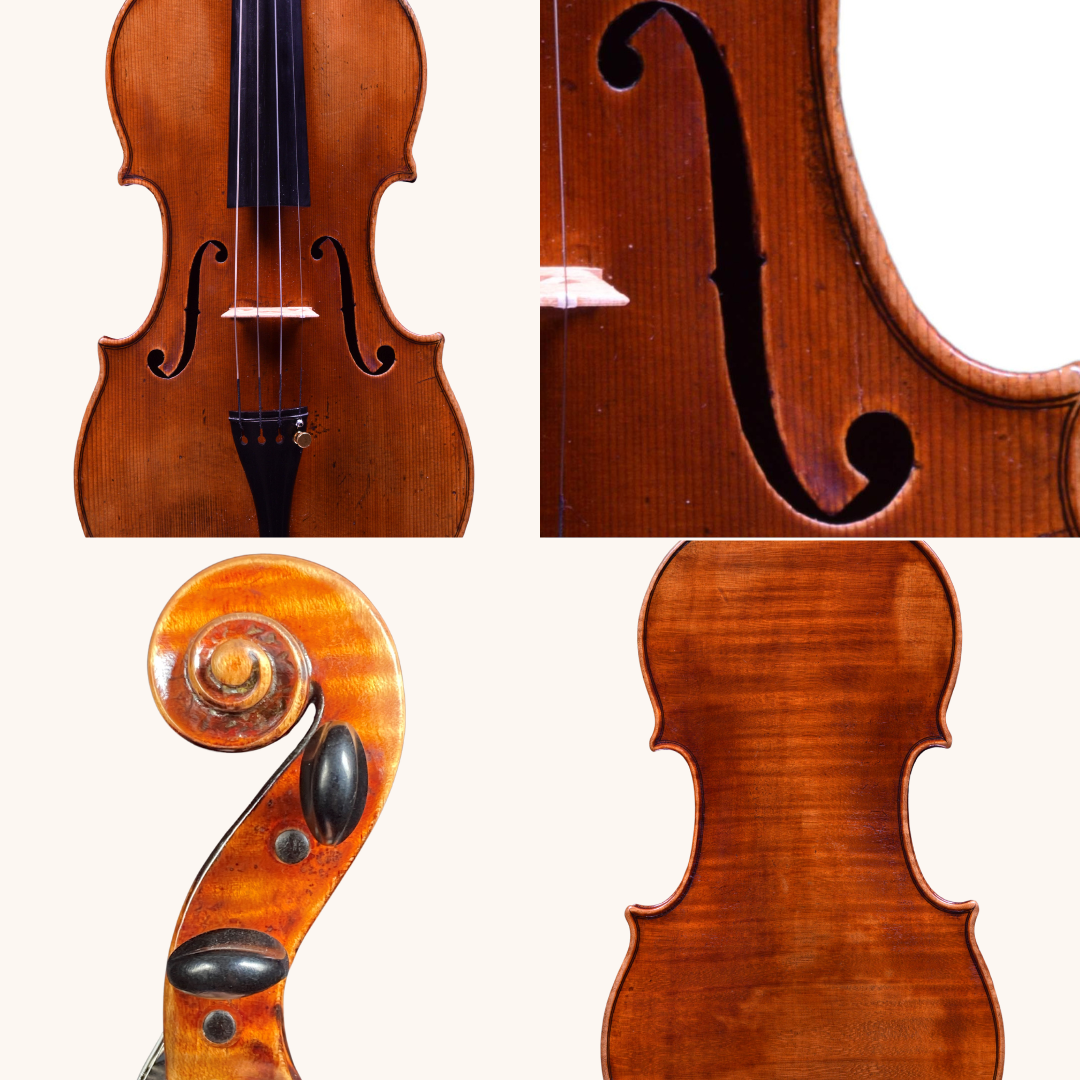Giovanni Francecso Pressenda is considered to be one of the best violin makers of the 19th century. Many prominent string players perform on his instruments and they are hugely prized by connoisseurs for their sophisticated sound and superlative workmanship. But what really elevates his work above that of other makers of the period?
Well, Italian violin making was going through a relatively universal decline in quality. In Cremona, whilst the instruments of Storioni, the later Bergonzi family and the Ceruti family are undoubtedly great, they are also irrefutably less fine than the Cremonese makers who came before. We see a similar trend in Naples with the Gagliano family and also in Venice. The Golden Age of Italian violin making had begun to tarnish.
Into this somewhat discouraging picture comes the young Pressenda. His teacher remains unclear: it was once believed that he learnt with Lorenzo Storioni in Cremona, but it is now thought that he learnt in Turin with some of the French makers who lived and worked there. It is probable that it was this French influence that injected into his making the very rigorous quest for neatness and perfection which marks his work apart from his Italian contemporaries.
Pressenda quickly became a highly sought-after maker in his own lifetime, establishing his own very influential workshop around 1821. The Pressenda workshop brought about a new era of violin making in Turin, inspiring makers such as Rocca and Fagnola and leading to Pressenda himself being considered the father of the modern Turin school.
Analysis
Pressenda's first period is often thought of as a time of experimentation and of gradual departure from the French Stradivari model which makes his early work so Parisian in flavour. The instruments from around 1830 onwards start to take on a more personal aesthetic, adding some stylistic elements of the Guarneri model to the Stradivari outline. This 1843 instrument is a good and typical example of the Pressenda model, combining a healthy dose of the beautiful Stradivari symmetrical perfection and a taste of the leaner, meaner, and more rugged approach of Guarneri ‘del Gesù’.
In the pictures below, we see the short corners of the Guarneri model, but superimposed over a slightly more Stradivari outline, seen especially in the c-bouts. In the f-holes, we see a return to Guarneri, though again, they seem to be finished in a slightly more meticulously Strad-like way than the more spontaneous feeling 'del Gesù' sound holes. And in fact, that statement really applies to the whole instrument - flavours of 'del Gesù' but without as many tool marks and imperfections. Contradictions abound, but taken as a whole this is a most successful violin!

And finally, onto the sound! The violin has a big but sophisticated voice and projects like an opera singer. It's a brilliant blend of precise yet exciting, a real concert instrument.